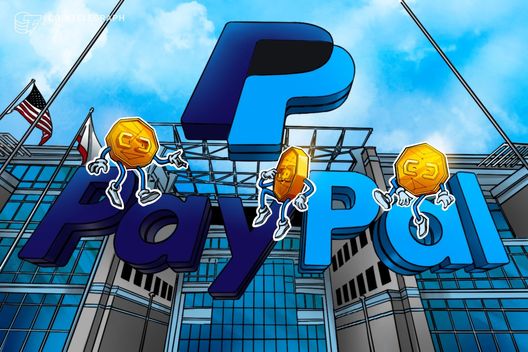
Opinion by: Innokenty Isers, Founder and CEO of Paybis
The loudest sign in months was not a worth chart — it was a checkout button.
PayPal turned on crypto on the level of sale for US retailers, promising near-instant settlement and worldwide charges as much as 90% decrease than the established order.
That form of delta doesn’t simply scale back prices, it rewrites the economics of cross-border commerce.
It additionally suggests what the following section of crypto adoption will appear like: embedded in on a regular basis funds and broadly accessible, slightly than speculative, flashy and gated to merchants.
Regulation is quietly selecting funds
Builders have spent years ready for a compliance path they might observe, and it arrived first for funds. In Europe, MiCA created a single rulebook for stablecoin issuance and e-money tokens, with key provisions taking impact in 2024–2025.
Singapore’s framework outlines redemption, reserve, and disclosure guidelines for single-currency stablecoins.
Hong Kong has switched on licensing for issuers, transferring from pilot applications to full regulation.
Whereas buying and selling stays unclear in lots of jurisdictions, funds have a regulatory pathway, with stablecoins more and more handled as monetary infrastructure slightly than speculative devices.
Adoption arrives invisibly
The primary time tens of thousands and thousands of individuals “use crypto” at scale, they’ll in all probability not even discover. PayPal’s crypto checkout software supports greater than 100 tokens and wallets, settling to stablecoins or fiat behind the scenes. That is exactly the form of simplicity mainstream customers count on.
Company alerts are lining up, too. JD.com says it can search stablecoin licenses in main markets to scale back cross-border settlement instances to seconds.
That is the form of mass adoption. It’s not educating everybody seed phrases, however letting funds work quicker and cheaper contained in the instruments folks already belief.
Associated: PayPal launches crypto checkout tool, adds support for over 100 tokens
Some readers will bristle at that pragmatism — a future the place massive fee firms mediate stablecoins could really feel like giving an excessive amount of energy again to conventional gatekeepers.
Others will object that stablecoins nonetheless carry systemic and coverage dangers, a view Europe’s ECB has aired forcefully. These critiques are wholesome as a result of they sharpen the mandate for oversight and resilience as fee scales.
The trader-first design is obstructing the on-ramp
Many crypto apps had been designed primarily for hypothesis — depth charts, reward pop-ups and sophisticated staking flows. That kind of UX excludes the on a regular basis customers that fee options are supposed to serve.
When each display screams “purchase the dip,” a dad or mum sending cash to household or a freelancer invoicing overseas will click on away. To succeed in them, platforms should look much less like exchanges and extra like utilities — compliant, predictable and accessible when wanted.
That utility commonplace is well-defined. It means excessive uptime beneath heavy demand, clear fiat on/off-ramps, and KYC/AML that appears like a contemporary checking account opening, not a weeklong scavenger hunt. It additionally empowers again places of work with blockchain advantages like shared, tamper-evident data that reduce duplicate audits and velocity reconciliations. Cellular-first is the default (most funds originate on a telephone), and buyer help should converse every market’s language and legislation.
The takeaway is evident: Funds may be successfully regulated and scaled ahead of different crypto verticals.
The market consequence: utility and yield
Funds change who advantages from crypto, shifting advantages from merchants to companies and households. A remittance that used to price 5%–10% now costs roughly 0.99% in PayPal’s program, which is a significant switch of worth to small companies and households. When prices fall considerably, transaction quantity follows, and the winners will likely be firms that look and behave like regulated monetary utilities.
Analysts underscore the purpose: Stablecoins intersect with conventional finance and crypto, and their regulatory momentum is unmatched throughout jurisdictions. If funds are essentially the most clear use case at this time, stablecoins are the rails that energy them.
Dangers stay. Coverage makers fear about capital flows, shopper safety and illicit finance — and so they’re proper to, particularly as mainland China experiments by way of Hong Kong’s cautious regime. Market builders ought to welcome stringent audits, quick redemption, reserve high quality guidelines and real-time monitoring.
These usually are not obstacles however conditions for world attain. The fact is that higher compliance tech (the very factor some skeptics concern) is what is going to lastly unlock crypto’s mainstream utility.
Opinion by: Innokenty Isers, Founder and CEO of Paybis.
This text is for common info functions and isn’t meant to be and shouldn’t be taken as authorized or funding recommendation. The views, ideas, and opinions expressed listed here are the writer’s alone and don’t essentially mirror or characterize the views and opinions of Cointelegraph.



